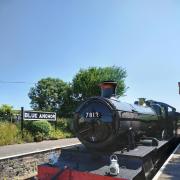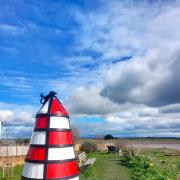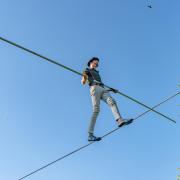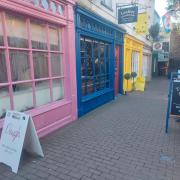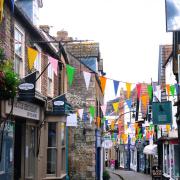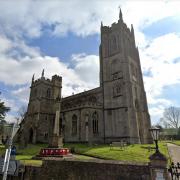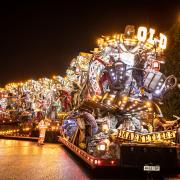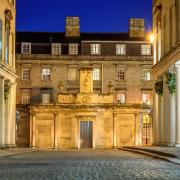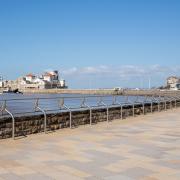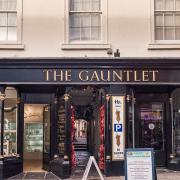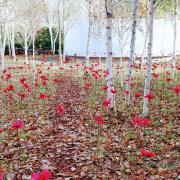In our special series Catherine Courtenay takes a look at village life in Somerset
Chew Magna is no stranger to awards, it was even named best village in Britain in a Sunday Times survey in 2011. It’s a pretty village, full of historic interest and set in the lovely Chew Valley on the northern edge of the Mendip Hills.
Being just 10 miles equidistant from Bristol and Bath, it is a popular place to live for commuters; but for one long-standing village resident, the cities’ attractions hold no appeal.
Mary Hasell was born at North Chew Farm on 9 May, 1920. She recalls going to Bristol occasionally as it was where her mother was born and brought up. “In the early days I used to ride in the pony and trap and it was quite a journey. But I was always pleased to come back to Chew Magna - always.” So much so, that when her parents thought about sending her to school in Bristol she ‘burst into tears and said I wasn’t going; I said I couldn’t go as I’d get travel sick’!
Mary loved growing up in the village. “We used to walk for miles as children. We’d go out after breakfast picking blackberries and mushrooms and go paddling in the gully, she says.”
She gladly left school at 14 to stay at home and help her mother, before eventually going on to do clerical work for William King and Sons auctioneers, a job which involved going to market every Tuesday in Winford.
Chew Magna was always the main village in the valley. Its importance grew from Medieval times through its role in the woollen trade. It was also where the Bishop of Bath and Wells had a country estate - a small part of the summer palace still survives at Chew Court.
The Grade I-listed St Andrew’s Church dates to the 12th century and the village itself has many historic buildings, including its raised pavements, one of which leads to Tun Bridge over the River Chew, which is thought to date from the late 15th century.
Mary says that not much has changed over the years in Chew Magna. It’s always had good pubs and not many villages can boast having three choices, the Bear & Swan, The Pelican and The Queen’s Arms – and in addition there’s Michelin-starred pub, The Pony & Trap, on the village outskirts. A local favourite is Lazy Lobster seafood restaurant and bar, where you can also buy fish to cook at home. And for meat, there’s W J Pearce and Sons butchers, with village stalwart and local character, Clifford Pearce, at the helm.
Queen Elizabeth II officially opened the new Bristol Water reservoir, Chew Valley Lake, in 1956. It’s now a popular place for walking and fishing and is particularly noted for its wildlife, being an all-year-round magnet for both native and migrant birds.
It’s this landscape, the setting for Chew Magna, which is particularly special according to Mary’s grandson, farmer Luke Hasell.
Luke is a founder of The Community Farm; overlooking Chew Valley Lake, the site is next to his own organic beef and pork farm. Set up in 2011 as a social enterprise, with 500 member stakeholders, it supplies organic produce to hundreds of homes in the valley, in Bath and Bristol and in Weston-super-Mare.
Luke says: “When I was a kid dad would say to me ‘This land is a hidden treasure and no one knows about it’. When Luke took over the farm after his father’s death, there was only one place to site a community farm. “You only have to set foot on this land to know why. It’s got a backdrop to die for and it’s a very special place.”
Valley Fest
A celebration of local food, along with an impressive line-up of bands, Valley Fest is an annual festival in Chew Magna, held on Luke Hasell’s farm at the end of July.
What began as a ‘little musicky thing’ for charity, has grown into a family event that attracts around 10,000 festival-goers.
The key message is all about sustainable and ethical food production. A highlight is the Feasts, where invited chefs cook a daily spread using local produce “
There’s a big focus on food and farming, but with a big dollop of fun,” says Luke.
Coronavirus may see this year’s event cancelled, but visit valleyfest.co.uk for the latest information.
Did you know?
A stone trough on Tun Bridge is said to have been used by villagers to leave money for farmers bringing food to them during a smallpox outbreak.
Population: 1,149 (2011 census)
Buy or stay?
Buy: A four-bedroom semi-detached house on the high street, which used to be the village bakery, is for sale at £650,000. (Debbie Fortune Estate Agents).
Stay: You can stay at night in the centre of the village at 18th century pub, The Bear & Swan, which has four boutique rooms.




